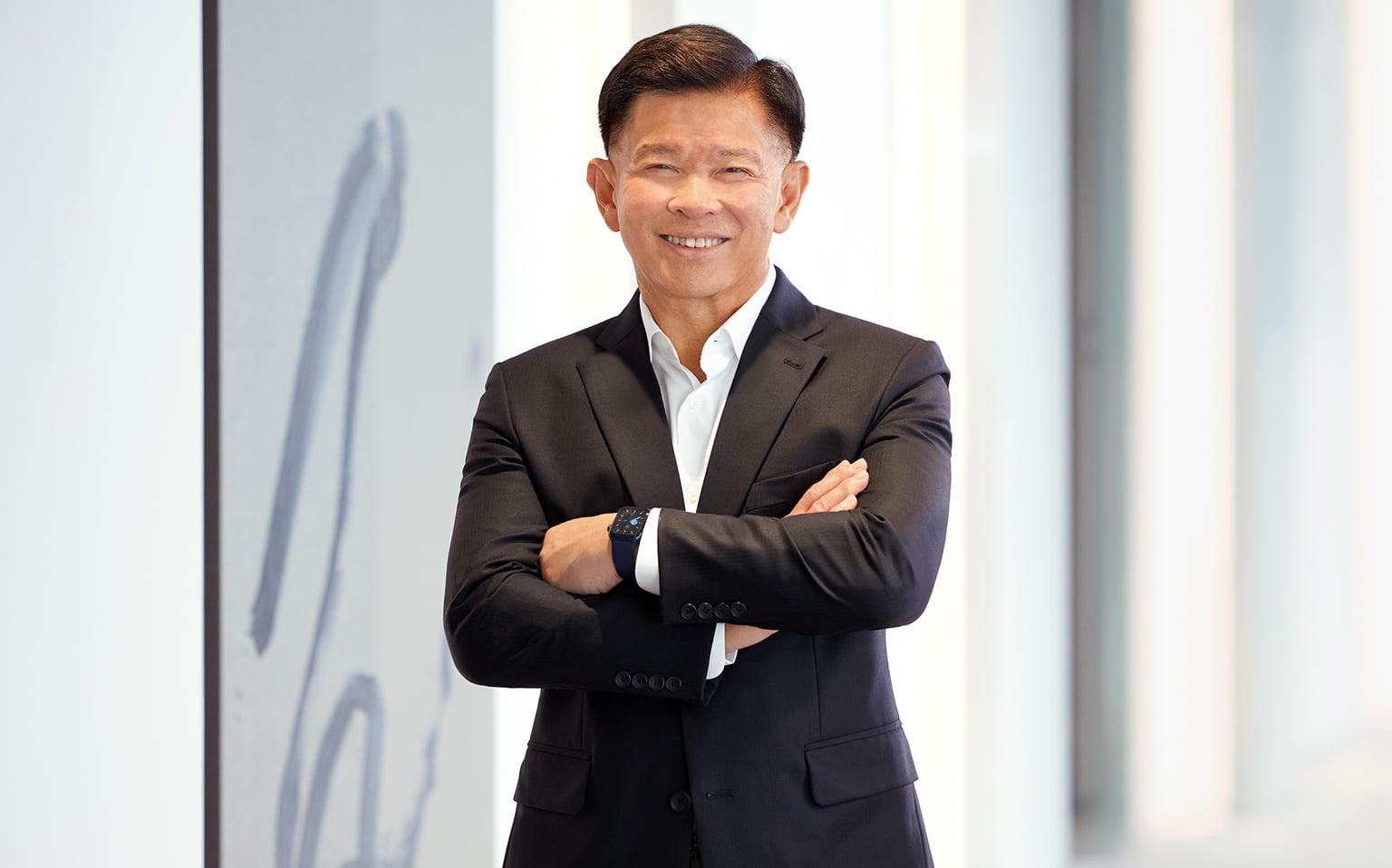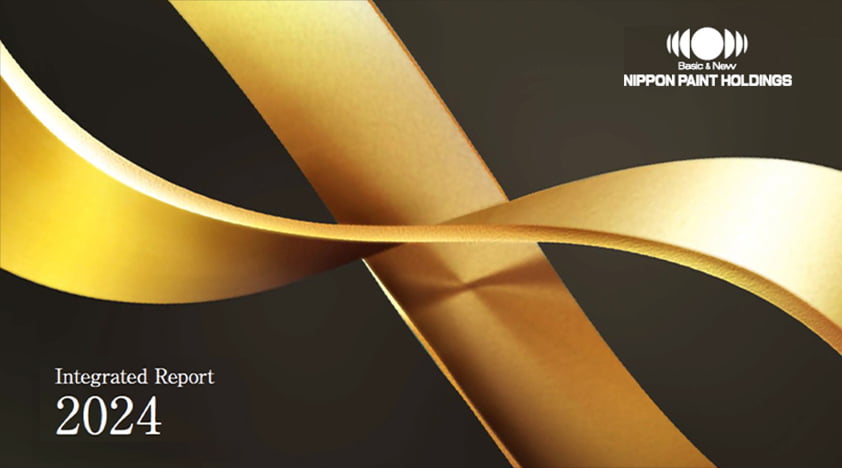
— Pragmatically Tackling Challenges,
Striving for Operational Excellence
NIPSEA Group: Navigating headwinds to seek out opportunities for growth
With delivery of the Medium-Term Plan (FY2021-2023) (MTP) commitments, it is worthwhile reflecting on what we had gone through and where we could have done better. In our previous MTP, our Group encountered three significant challenges that affected the operating landscape that were not fully anticipated when we crafted the plan: a prolonged pandemic and its aftermath on supply chains; China’s property market crisis and its knock-on effects on market sentiments; and the hyper-inflationary conditions and economic distress in several of our markets. The pronounced effects of the pandemic delayed recoveries in several markets. Operationally, challenges in the supply chain arose from parts and material shortages, coupled with the difficulties of logistically moving goods. Rising costs of material and energy inputs impacted performance. Kudos to all our colleagues. It is only through their collective and concerted effort that we mitigated the consequences on our customers and the Group.
China’s property market woes deepened and stretched out to an extent that was unprecedented. This coincided for long periods with the country’s Zero-COVID policy. In China, our colleagues not only persevered through the constraints of the Zero-COVID policy and kept our operations going, but they also orchestrated a strategic shift. We broadened our customer base in the traditional TUB Business (Trade Use Business: business transactions direct to Project customers and main contractors, etc.; B2B business) to regional developers, constructors and contractors. Beyond the residential new build segment, Nippon Paint China developed a slew of product offerings that targeted specific applications like clean rooms, factories, hospitals, schools, etc. As we began to look at widening our addressable market, our TUB colleagues leveraged on the footprint of fellow TUC colleagues to serve smaller, rural customers. Additionally, the TUC business (Trade Use Consumer: business to consumers, DIY business, sales via dealers/distributors and e-commerce to end consumers, etc.; B2C business) ramped up resources to penetrate the smaller Tier 3-6 cities. To succeed in these 4,000 smaller cities in China, different products were developed and distributed and more of our talent base was redeployed to these new growth areas. Although it is still early days, the higher sales growth in Tier 3-6 cities over the past two years gave us confidence that we are heading in the right direction.
As we ventured out of the big metropolitan areas, the sales and marketing strategies were supported by a supply chain initiative with outreach to many regional paint and putty manufacturers as partners to complement our own regional factory networks. Through partnerships with these manufacturers, we were able to expand our product sales under our brand at a faster pace and scale, broadening our access to remote markets. In many instances, the strong NIPPON PAINT brand coupled with the attributes of a larger global group were highly attractive to our partners. Last year, our call for partnerships was met with positive responses from 60 companies and we are working hard to bring into the fold many more in 2024.
As the number of new residential apartments will drop in the foreseeable future, we hope to stimulate the renovation and repainting demand with our “Color Strategy.” We kicked off with extensive advertising and promotional campaigns for Magic Paint, our innovative new product that combines exceptional design and texture finishes with environmentally friendly features. For our customers to have easy access to the thousands of colors on offer, Computerized Color Matching (CCM) machines were rapidly installed. By the end of 2023, we had installed approximately 19,000 CCM machines across China.
The last three years have been a baptism of fire for the Group as we faced unprecedented hyper-inflationary and economic distress conditions. Whilst we endured the financial impact of hyper-inflationary accounting, our Betek Boya colleagues in Türkiye focused on basic operating discipline, launching new products, and continuing to invest in the market, gaining five percentage points of market share along the way. With an eye on the future, productive capacities were increased both in Türkiye, and in Betek Boya’s subsidiary in Egypt. With our recent acquisition in Kazakhstan, Alina, the leading manufacturer of paint and dry-mix mortar joining the Group, Betek Boya is well poised to look at Central Asia as an exciting growth area.
In August 2021, we strategically chose to divest our India businesses to Wuthelam Group, our majority shareholder, with the aim of enabling these businesses to undertake an aggressive growth path. This decision stemmed from our recognition that such an aspiration to surge in a rapidly growing market and close the gap with the market leaders in two regional but sizable Indian markets would require bold and substantial investments that, as a Group, we deemed highly uncertain and risky at that time. Since then, our Indian colleagues did accomplish significant strides in gaining market shares and achieved sustainable profitability. To a large extent, one could say that the initiatives in India post divestment paid off, creating a brighter pathway to more robust and profitable growth prospects. As a result, we decided to exercise the option to repurchase these businesses in August 2023.
Our Indonesian operations also merit a mention. It is one entity that has attracted attention with its consistently higher profitability. However, what is exciting is that our Indonesian colleagues have set about reinventing themselves with new products that are reputedly best in class and penetrated into new segments. The seeds planted ought to signal stronger growth prospects for the Group in the coming years.
Japan Group: Creating an enhanced “profit-making platform” through organizational reforms and functional unification
A voluntary early retirement program, Next Career Plan (NCP), was introduced in 2022. NCP was among the most challenging and heartfelt initiative undertaken. Designed to ensure fair treatment for employees through special early retirement packages and job placement services for their subsequent careers, it was at times quite traumatic for the organization as we saw some of our long serving colleagues depart.
Recovering from NCP, at the very first Japan Group’s General Management Meeting, leaders embraced a rallying call for “One NIPPE.” Since the bunshaka restructuring in 2015, which divided the organization along focused business lines—Automotive, Decorative, Industrial, Marine, and Surface Treatment—Japan Group has accelerated reforms within each partner company. Acceptance of this new unifying approach recognizes that we must find a way to retain the benefits of bunshaka restructuring while addressing structural impediments to operating as one cohesive unit. It was about how to have our cake and eat it. Striking a new balance would likely introduce significant risks that necessitate pragmatic approaches to bring our people together along the journey.
One clear intent was to motivate an open collaborative ethos among all staff in Japan. A firm believer that leaders must demonstrate by example, our leaders were persuaded to wear multiple hats and actively exemplify this principle of oneness. With double hatting in both a partner company role as well as a pan-Japan Group role, senior management constantly grapple with the trade-offs between business units and the group, and among different business units. Over time, a new working attitude will evolve. Even today, we see some of our cohort of managers and staff starting to embrace this desired working mindset and feel encouraged enough to look beyond narrowly defined boundaries of roles and organizations, daring to think in terms of enlarged common value creation.
In addition to these efforts, the journey of our Marine Coatings reassured us that a phased pathway toward financial health and growth can work in Japan. In the first phase, we refreshed the management teams under the leadership of Takeshi Shiotani from our Industrial Coatings entity. As President of both Marine and Industrial Coatings, he could draw upon the resources and strengths of both. Additionally, Mr. Shiotani personally led the efforts to return to profitability in Japan while deputizing Gladys Goh to address the revamp of the international associates. Phase 1 of rescue and resuscitation ended in December 2023 with all units in Marine Coatings regaining profitability, thereby triggering Phase 2 in which Ms. Gladys took the reins to invigorate growth and expansion.
Building on the experience gained in restructuring Marine Coatings, especially in customer and segment profitability, Mr. Shiotani assumed the pan-Japan, cross-organizational role of Chief Commercial Officer (CCO). The success he wrought in energizing sales focus and profitability in a stagnant Japan marine arena is now expected to be replicated across our Japan industry, starting next in the automotive and decorative areas.
A pragmatic tailored approach had been the guiding principle when we approached the objective of creating an enhanced “profit-making platform.” Take, for example, the auto segment in Japan. The emphasis in the initial phase was on the technical division as we assessed that we had fallen behind technologically and needed to have the technical leadership pull together and deploy valuable resources to specific future projects that would reset the competitive field. The NIPSEA CTO (Chief Technology Officer) who has an automotive background doubled up as the Global Auto CTO so that we can leverage resources from outside of Japan. It is only when key technical projects are well underway that we set about initiating sales force reforms spearheaded by the CCO.
There is no one solution fits all mentality. The key is pragmatism. In late 2023, there was another step up in cross-Japan Group collaboration as the so-called Jupiter and Gemini task forces were set up to target the electric mobility and 3C markets with a combined array of product offerings drawn from different partner companies. What is encouraging is the enhanced communication and rapport between task force members from different entities who are approaching key customers as one unified team. Many experiments are underway. The common thread is to encourage collaboration, and break silos with a view to growing the business and making money. These management reshuffles and shifts in employee mindset have yielded some initial successes. There is still a long way to go.
Automotive business: Nurturing global collaboration with customer centricity
Collectively, the automotive segment in Nippon Paint Group is the second largest segment after decorative paints. However, in 2021, our Automotive business faced numerous challenges, including tougher competition, operating losses in several markets, bloated cost structures and glaring technical deficiencies. At that time, the automotive segment in the Group functioned as disparate entities divided by region―Japan, NIPSEA Group, Europe, and the Americas―where the primary link was that the majority of customers were Japanese OEMs. This balkanized set-up posed significant challenges for our Group, hampering our ability to present compelling sales propositions to many customers. The lack of a common purpose and direction meant that we were rather dysfunctional in technology and talent developments.
The first order of the day was to swiftly marshal the technological resources of Japan Group and NIPSEA and redirect focus on a limited portfolio of key projects. Leveraging the key strengths of our Japanese colleagues with the Japanese auto OEMs, they undertook global responsibilities for product development and support for Japanese auto OEMs. NIPSEA and our European colleagues took on the responsibilities for European and Chinese auto OEMs. While this is a broad bifurcation by customer focus, by having a CTO that straddles both the Japan segment and NIPSEA meant that emerging technologies could be shared and offered to different auto OEMs, irrespective of their country of origin. Anecdotally, there are pockets of progress. Hopefully in 2024, we achieve some substantial customer wins in the main programs. Winning is the only acid test of progress.
For the automotive business in the Americas, the focus was on integrating separate operations in the United States, Mexico and Brazil and building bridges so that our American and Mexican colleagues work as part of a more extensive Nippon Paint Group Automotive segment. At this point in time, all the auto units in the Americas have regained profitability and our US colleagues are playing key roles in the emerging film segment, as well as pulling their weight in the automotive parts arena with their intimate relationships with the global-tier parts manufacturers.
We believe that we have started pulling together the automotive business entities into a unified group not a moment too soon. As Chinese automakers set their sights on the export markets especially with their competitive electric vehicles (EVs), Nippon Paint Group Automotive with our global footprint and intimate knowledge of the Chinese auto OEMs are well placed to try to grow globally with these customers and eco-system partners. Internally, we are organized in a way that incentivizes our Chinese colleagues to ensure that we gain globally by assisting overseas Nippon Paint auto colleagues.
As all our key customers are global, we have customer-focused global key account managers (GKAMs) and local key account managers (LKAMs) to ensure that we meet the current and future expectations of our key OEM auto and auto parts manufacturers. This set up is new and we have much to learn. This enhanced customer-centric approach, we hope, will serve us well and make us the main partner of choice.
In summary, even in the face of market upheavals and input cost challenges, delivery of the last MTP commitments spoke volumes of the tenacity and ingenuity of our people. We embarked on many transformations and went about turning around loss-making businesses and units. With some positive experiences and eagerly awaiting the seeds planted to flourish, we look forward with confidence as we embark on the task at hand of delivering the Medium-Term Strategy.



